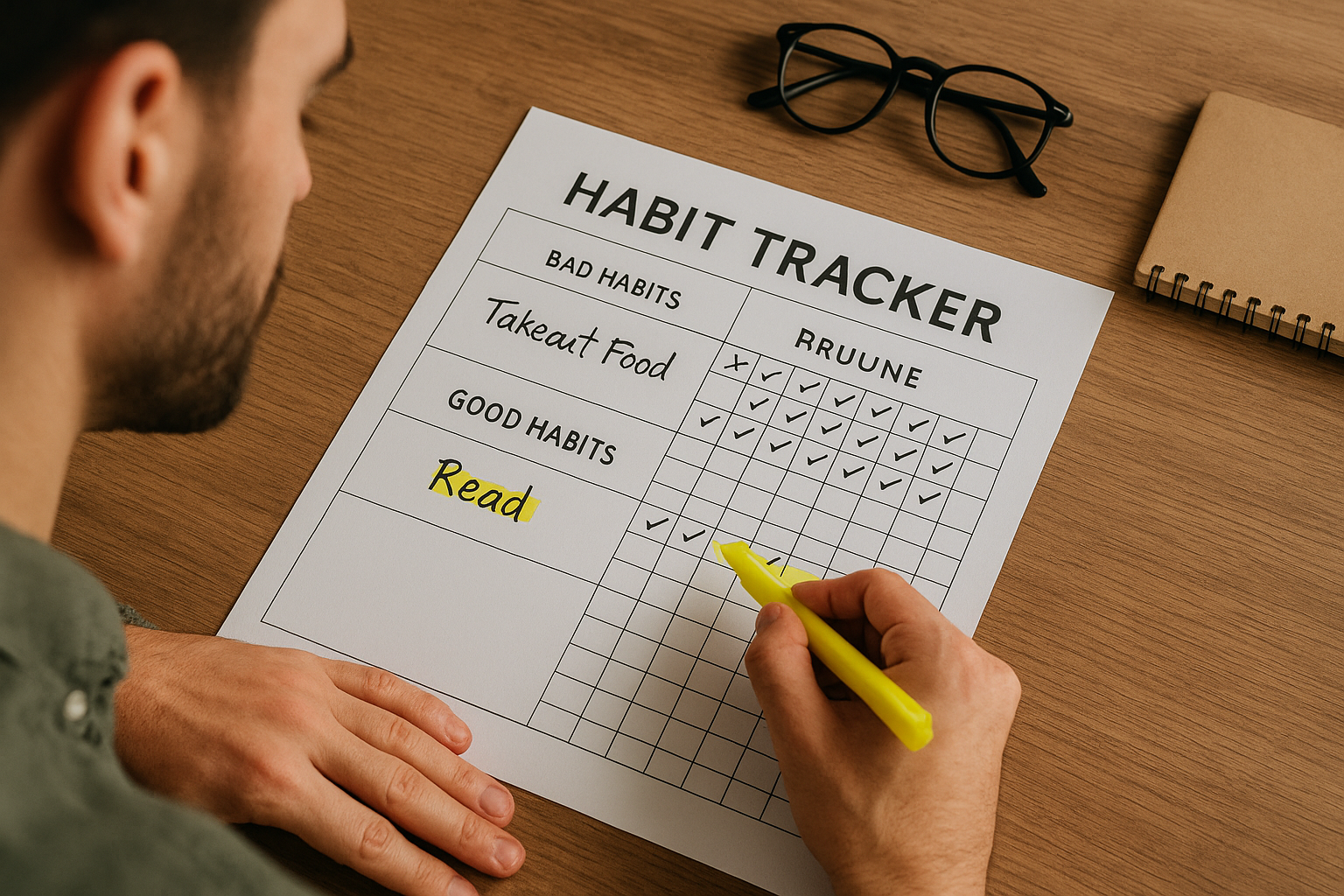We all have habits we wish we could change—snacking too much, scrolling endlessly, procrastinating on work. At the same time, we admire people who read every day, exercise regularly, or maintain focus. What sets them apart? They’ve mastered the process of how to break bad habits and build good ones that stick.
Habits shape your life more than you realize. They form your identity, direct your energy, and determine the results you see. The good news? Any habit can be changed with the right approach.
Understand the Habit Loop
Every habit operates in a loop: Cue → Craving → Routine → Reward. To change a habit, you need to disrupt or redesign this cycle.
Cue: What triggers the behavior
Craving: The emotional or physical desire
Routine: The action you take
Reward: The satisfaction or outcome that reinforces it
Understanding your loops gives you power. You can’t fix what you don’t recognize.
Identify the Bad Habit’s Cue and Replace the Routine
You don’t break bad habits by force—you replace them with better routines that satisfy the same craving.
Example:
Bad habit – Eating junk food when stressed
Cue – Work pressure
Craving – Comfort or relief
New routine – Short walk, breathing exercise, or healthy snack
Change the behavior, not the craving.
Use the 3Rs: Reminder, Routine, Reward
To build good habits, you need structure. The 3Rs framework works because it mimics how the brain already works.
Reminder – A cue to start the habit
Routine – The habit behavior
Reward – Something that reinforces the habit
Example:
Reminder – Alarm at 7AM
Routine – 15-minute walk
Reward – Check it off your habit tracker, feel refreshed
Over time, your brain will begin to crave the habit itself.
Make the New Habit Stupidly Simple
Complex habits don’t last. Start with the simplest possible version of the habit.
Want to read more? Start with 1 page.
Want to exercise? Do 5 squats.
Want to meditate? Try 1 minute.
Lowering the barrier makes the habit automatic. You can always scale up later.
Use Visual Tracking to Stay Consistent
Seeing your progress motivates you to keep going. A habit tracker, sticker chart, or digital app gives your brain a visual cue: “I’m doing this.”
Pro tip: Don’t aim for perfection. If you miss a day, avoid missing two.
Consistency builds identity. Identity fuels action.
Celebrate Tiny Wins to Build Momentum
Your brain loves rewards. Celebrate every small success to wire the habit deeper.
- Say “yes!” out loud
- Do a fist pump
- Share with someone close
- Reflect on how it felt
Celebration reinforces the idea that your new habit is positive, enjoyable, and worth repeating.
Design Your Environment for Success
Willpower is overrated. Your environment should support your habit without needing constant discipline.
Remove friction for good habits:
– Leave your journal on your pillow
– Put a water bottle on your desk
– Lay out gym clothes the night before
Add friction for bad habits:
– Delete distracting apps
– Keep junk food out of sight
– Unplug the TV after dinner
Your environment should make the right choice the easy one.
Stack New Habits Onto Existing Ones
Called habit stacking, this method ties your new habit to something you already do regularly.
Formula: After [current habit], I will [new habit].
Example:
– After brushing my teeth, I will do 10 push-ups
– After making coffee, I will journal 1 line
– After finishing work, I will stretch for 3 minutes
The brain loves patterns. Linking habits creates automatic behavior.
Accept Setbacks and Restart Immediately
You will slip. Everyone does. The key is to avoid the “what-the-hell effect”—where one mistake turns into a total collapse.
Instead:
- Treat failure as data
- Analyze what caused it
- Adjust your strategy
- Restart with compassion
Resilience is the real secret to lasting change.
Final Thought: Identity, Not Willpower, Creates Lasting Habits
Lasting habits are not built with willpower—they’re built on identity.
Don’t just try to “go to the gym.” Become a person who moves every day.
Don’t just “read books.” Become a reader.
Every small action is a vote for the person you want to become.
That’s how you break bad habits and build good ones that stick—by becoming the version of yourself who does the right thing, even when it’s hard.
Ready to start? Pick one tiny habit and cast your first vote today.

